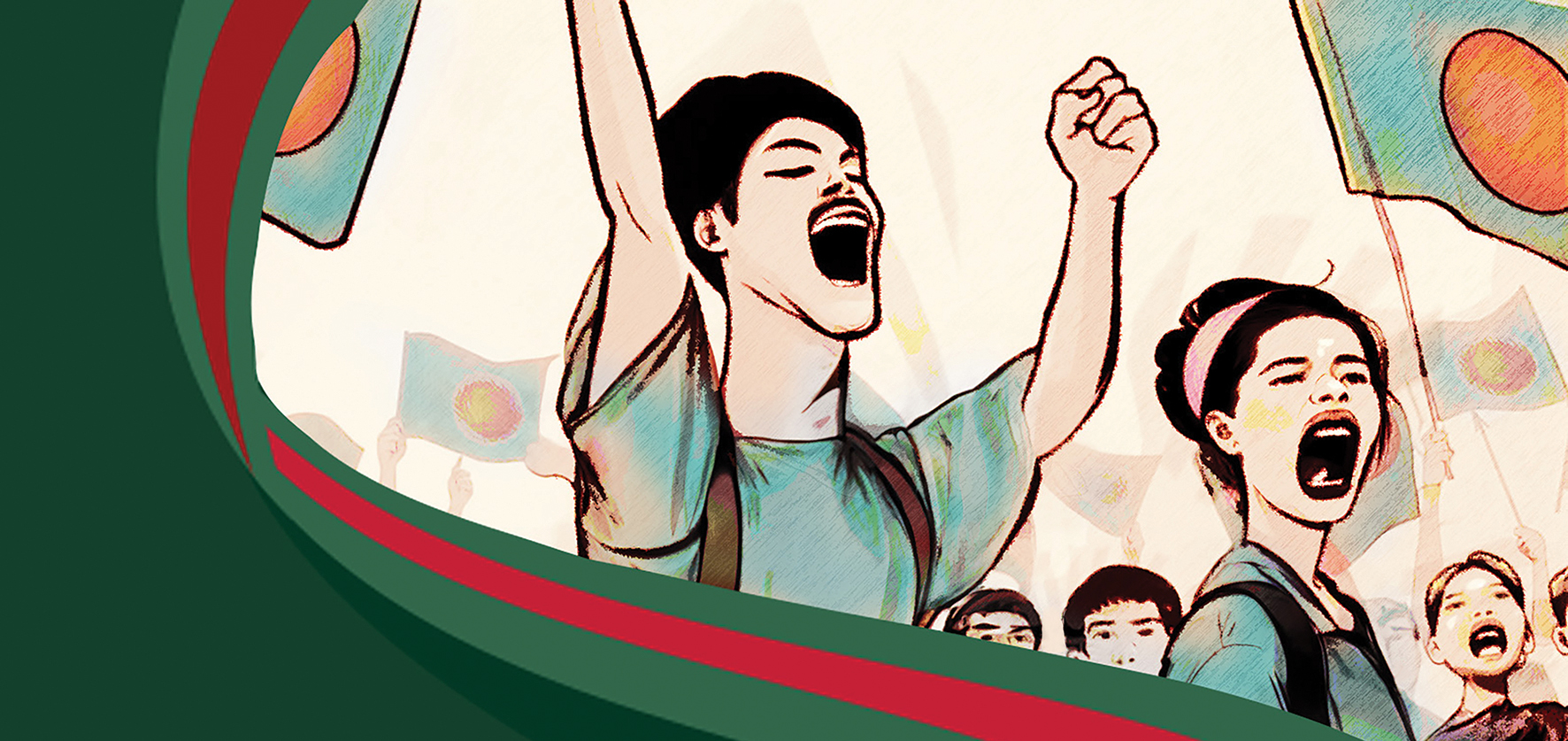Youth activism in Bangladesh and beyond
Youth activism—on social media and on the streets—has defined resistance movements for decades.
Since June, Bangladeshi students have led protests for their increasingly totalitarian government, led by Prime Minister Sheikh Hasina, to increase their employment quota. On July 15, 2024, peaceful student protestors across the nation were ambushed by strangers armed with rods, sticks, clubs and even revolvers.
The identities of the assailants remain unknown, although some believe they are from the Bangladesh Chhatra League (BCL), a student organization associated with Hasina’s political party, the Awami League (AL). The situation turned even more horrifying when, on July 16, police emerged with batons and tear gas in front of Begum Rokeya University. Abu Sayed, a 25-year-old Bangladeshi student, was shot and killed on camera while he spread his arms with no weapon in sight.
The video was shared on X, spreading awareness of the situation to those in Bangladesh and beyond. Other protesters gained traction on social media. Some used social media to further spread information on the Bangladeshi government’s enablement of terror and human rights violations. Others used it to commemorate those like Sayed who died in pursuit of their goal of a better Bangladesh for all Bangladeshi citizens.
Just a few days later, on July 21, the Bangladeshi government, which previously reserved 30 per cent of their jobs for the descendants of freedom fighters, scaled this quota back to only 5 per cent. The decision spurred the student-led protests to become widespread civil uprising. This all came to a climax when, on August 4, nearly 100 people were killed in a police crackdown on protestors. The ensuing outrage forced Prime Minister Hasina to flee the country, bringing her fifteen-year rule to an end.
Bangladesh’s students have achieved their goal, but it is disgusting how much violence they had to undergo before their government changed its policy.
As I learned more about the protests in Bangladesh, and the huge role students and media played, I remembered another similar protest. During the Polytechnic Uprising, which occurred in Athens, Greece, in November 1973, students from the Athens Polytechnic University revolted against the political and military dictatorship running Greece. Their slogan was “Bread-Education-Liberty,” and students from every department were present. They did not have social media, and instead used the student radio to spread the message to others in Greece that it was time to act. Many deaths were caused due to police brutality, especially on November 17, 1973, when a military tank destroyed the university gate to enter. Until this day, the uprising is cited as a major reason for the revitalization of democracy in Greek.
The protests parallel each other: peaceful protesting was turned violent by government intervention, eventually creating political reform. Students used media resources (X, Facebook, radio, etc.) to spread awareness and encourage others that they are not alone in their beliefs for a better future. Both protests illustrate that students and youth play a major part in social justice, societal reform, and political movements.
Many might take a student’s youth, inexperience, and lack of political background or financial support as a weakness in the field of social change and politics. However, protests such as those in Bangladesh and beyond remind us that what we do have are our thoughts, beliefs and social media platforms. From there, we can meet like-minded people and together create a powerful momentum of solidarity and resistance.

